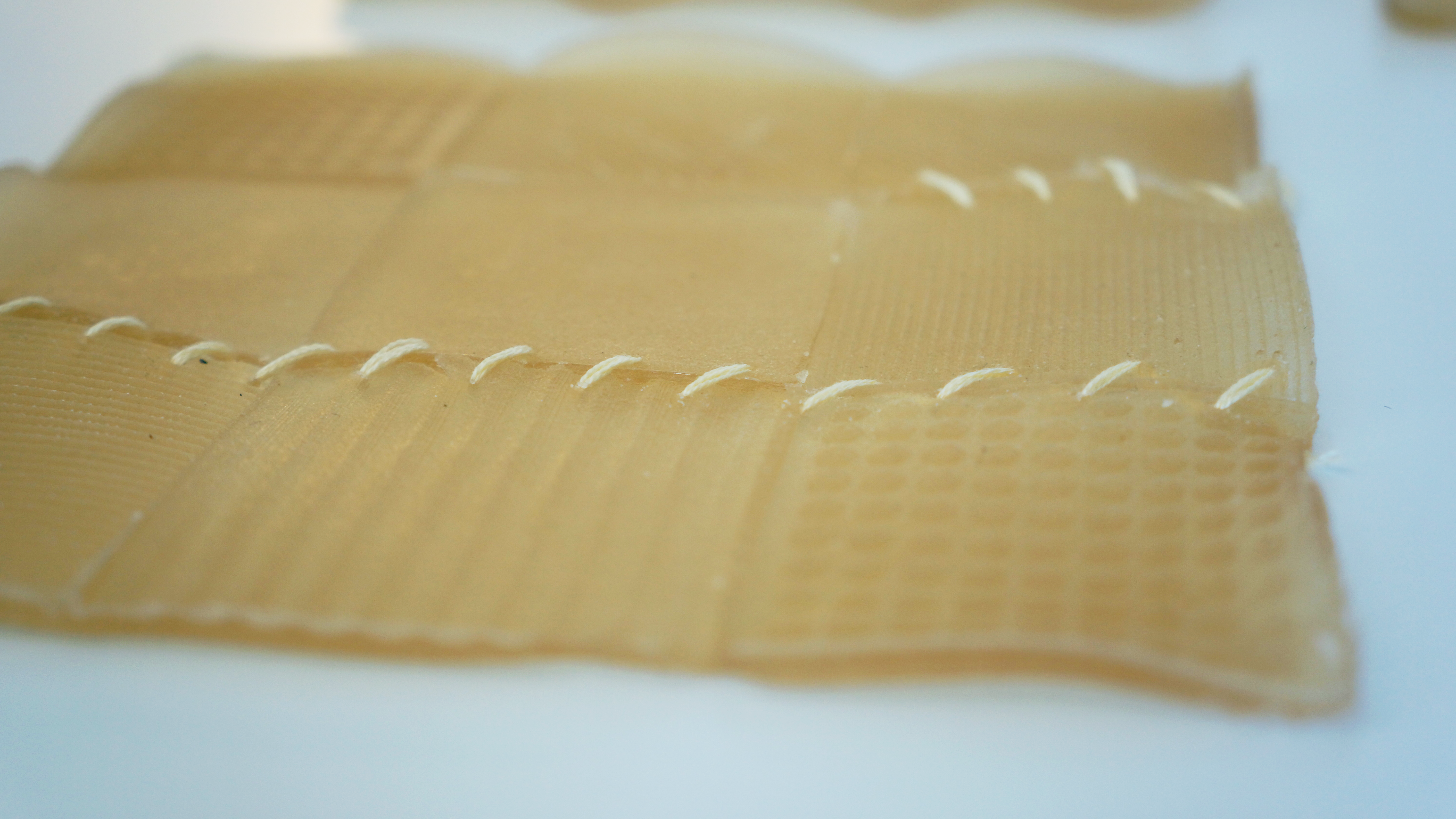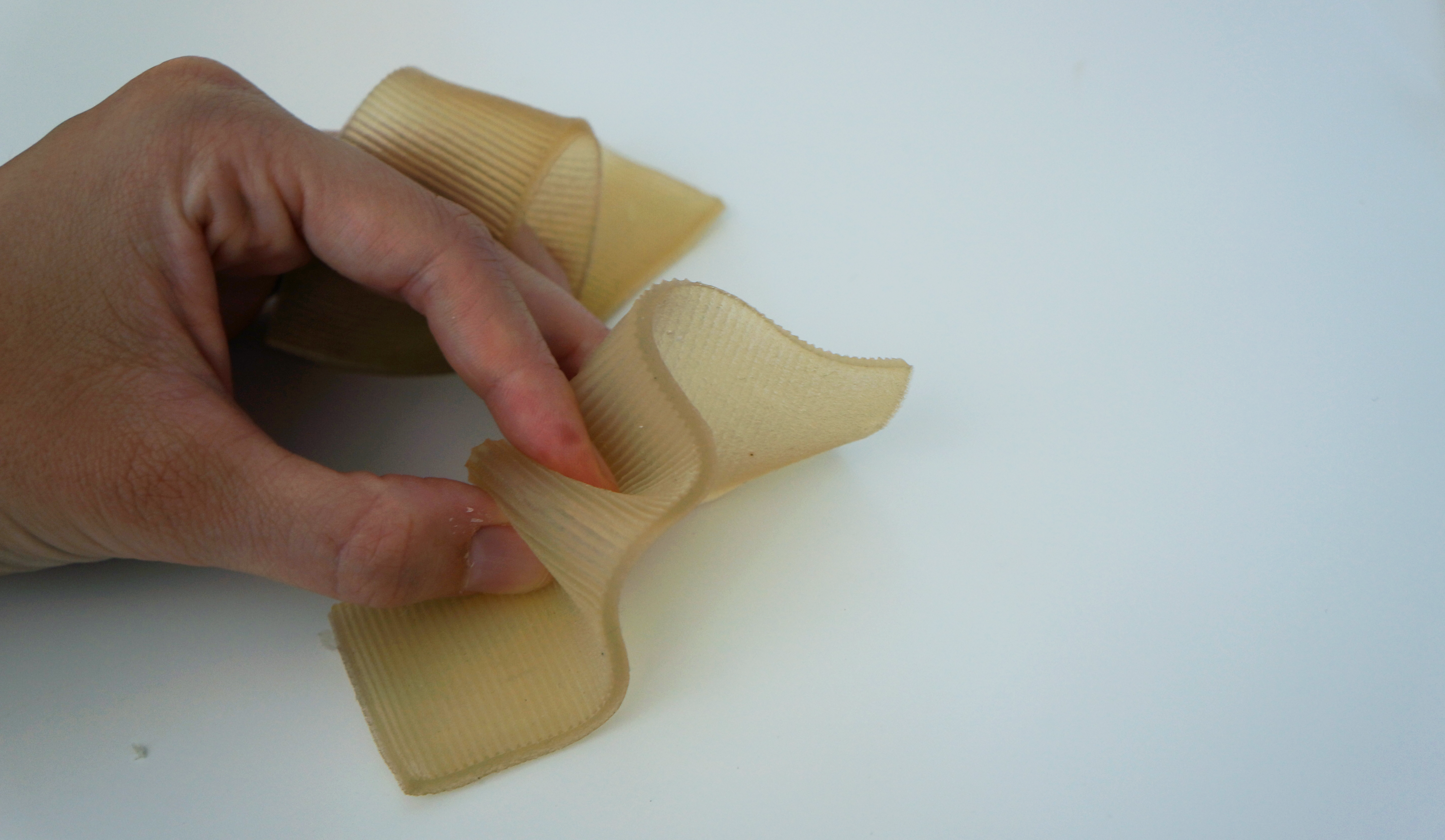temporary skin /
peau éphémère

Bioplastic, PLA mold, Rhino, Grasshopper, Python. 2022.
temporary skin | peau éphémère is an experimentation on the possibilities of using bioplastic as an expressive material in the context of the arts. To investigate the expressive potential, it focuses on the creation of a textured bioplastic fabric. The texture is transferred to bioplastic layers using 3d printed PLA molds. This project takes its inspirations from wearable technologies and HCI research.
In the field of product design, the choice of material is defined by its intangible and sensorial qualities. These properties influenced the meaning of the products for the customers (Rognoli, Salvia, and Levi, 2011: 2). We could argue that artists also choose to use a material based on these characteristics and their meanings for a certain fabricated artifact. temporary skin presents one avenue that can make bioplastic attractive for artists in terms of aesthetic, functionality, and cultural meaning.
Plastic can wrap, contain, structure, be worn, and its multi-usage quality makes it ubiquitous in today’s societies. The environmental impacts of this petroleum-based material have been known for a while and industries are beginning to invest in more sustainable solutions such as bioplastics. Bioplastics come from renewable sources such as starch, algae, and microbiota and have the property to be degraded quickly by microorganisms when placed in the right conditions.
Following this trend in material awareness, temporary skin explores the potential of using bioplastic in art. Looking at my own artistic practice, I consumed a lot of non-sustainable materials over the years. Moreover, I often encountered situations where I designed an object that no longer served after an exhibition or a performance and that will be thrown away eventually. If this object in parts or as a whole could be composted in a few days, my artistic process could become more sustainable and could embrace an aesthetic of ephemerality.
As a first direction, temporary skin explores ways to make pieces of textured bioplastic fabric. Textures are important in many art forms including textiles, ceramics, and sculptures. Textures modify the way light interacts with an object and, therefore, enable a wide range of aesthetic qualities. Lines, bumps, spikes, and carved motifs tell different narratives about the textured artifact.




Process



c::